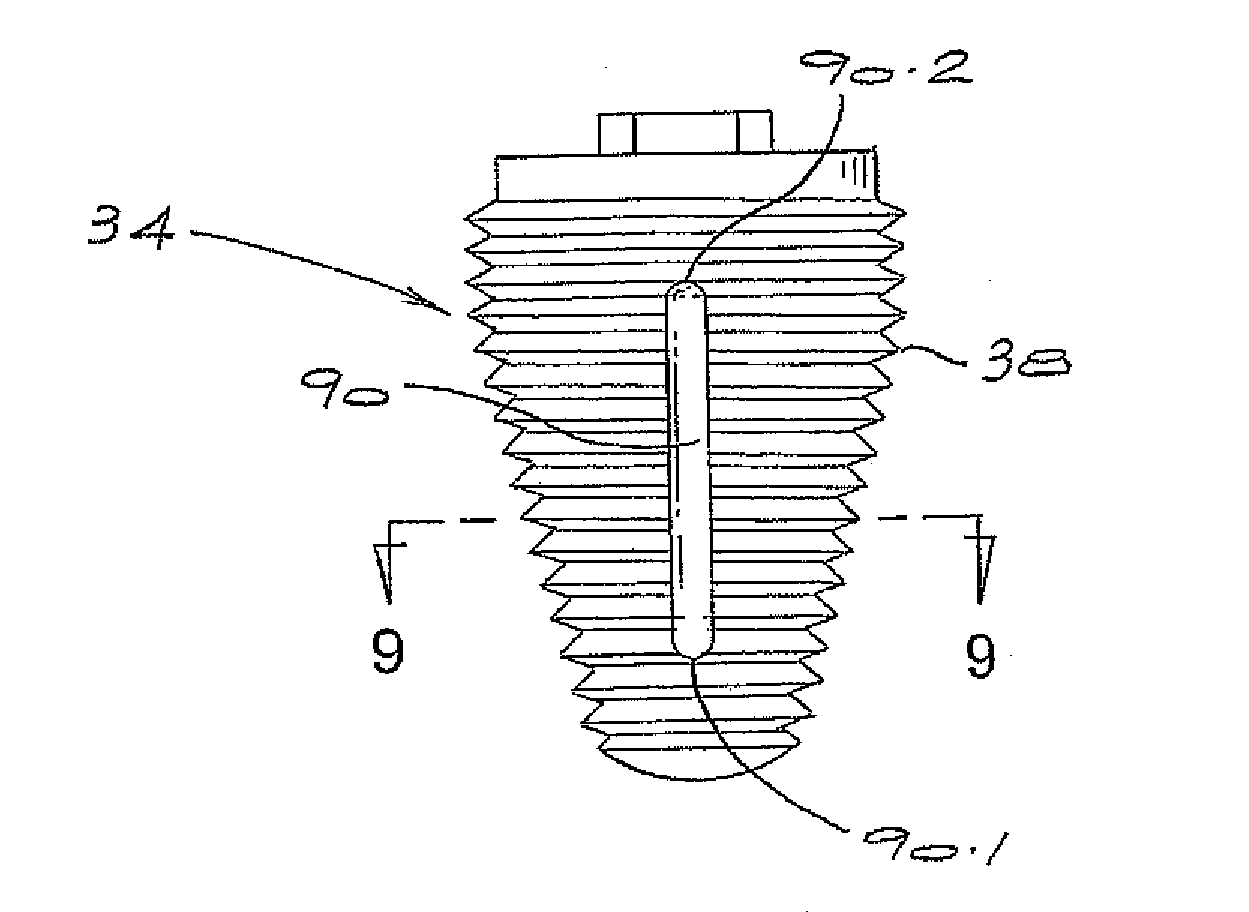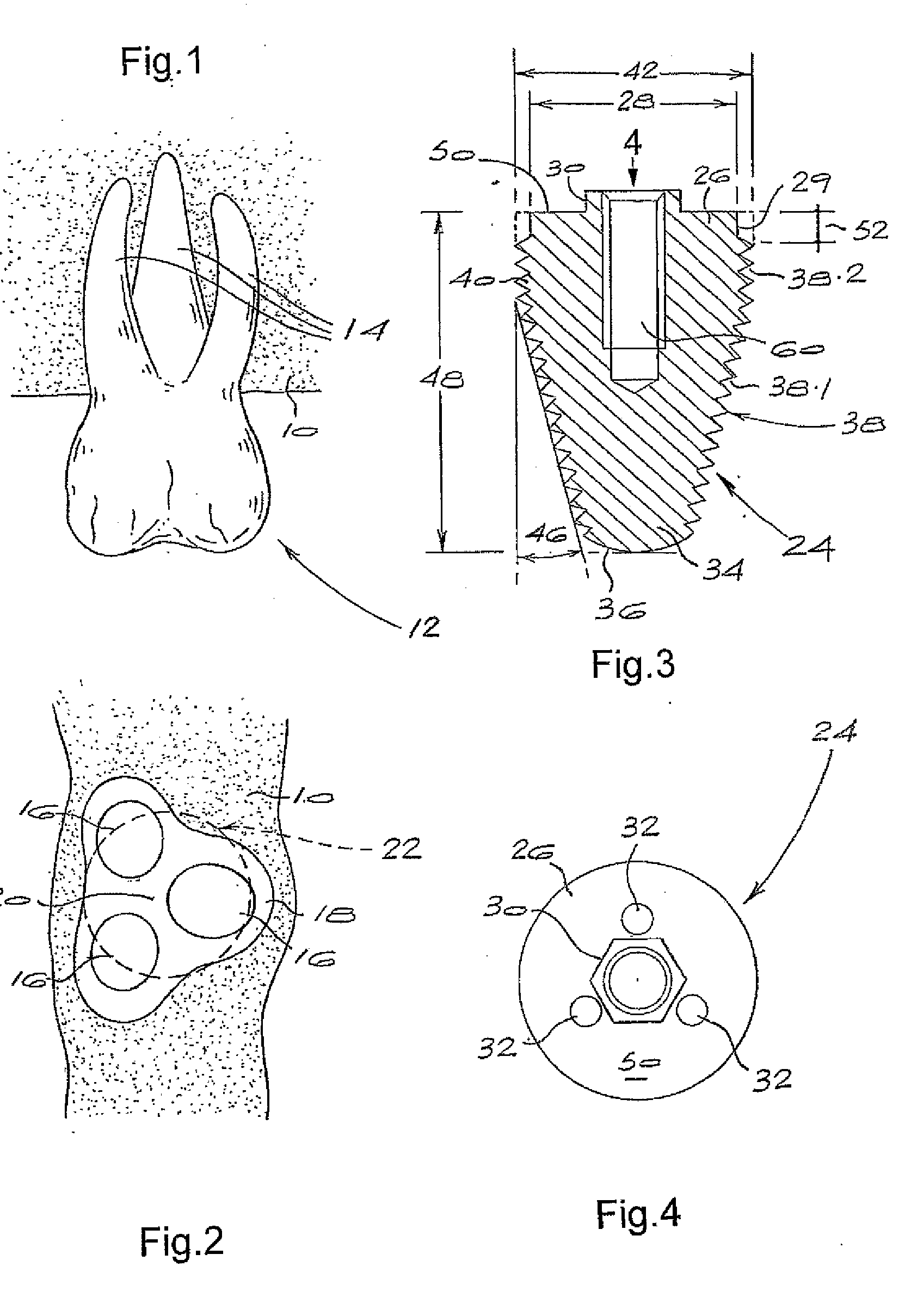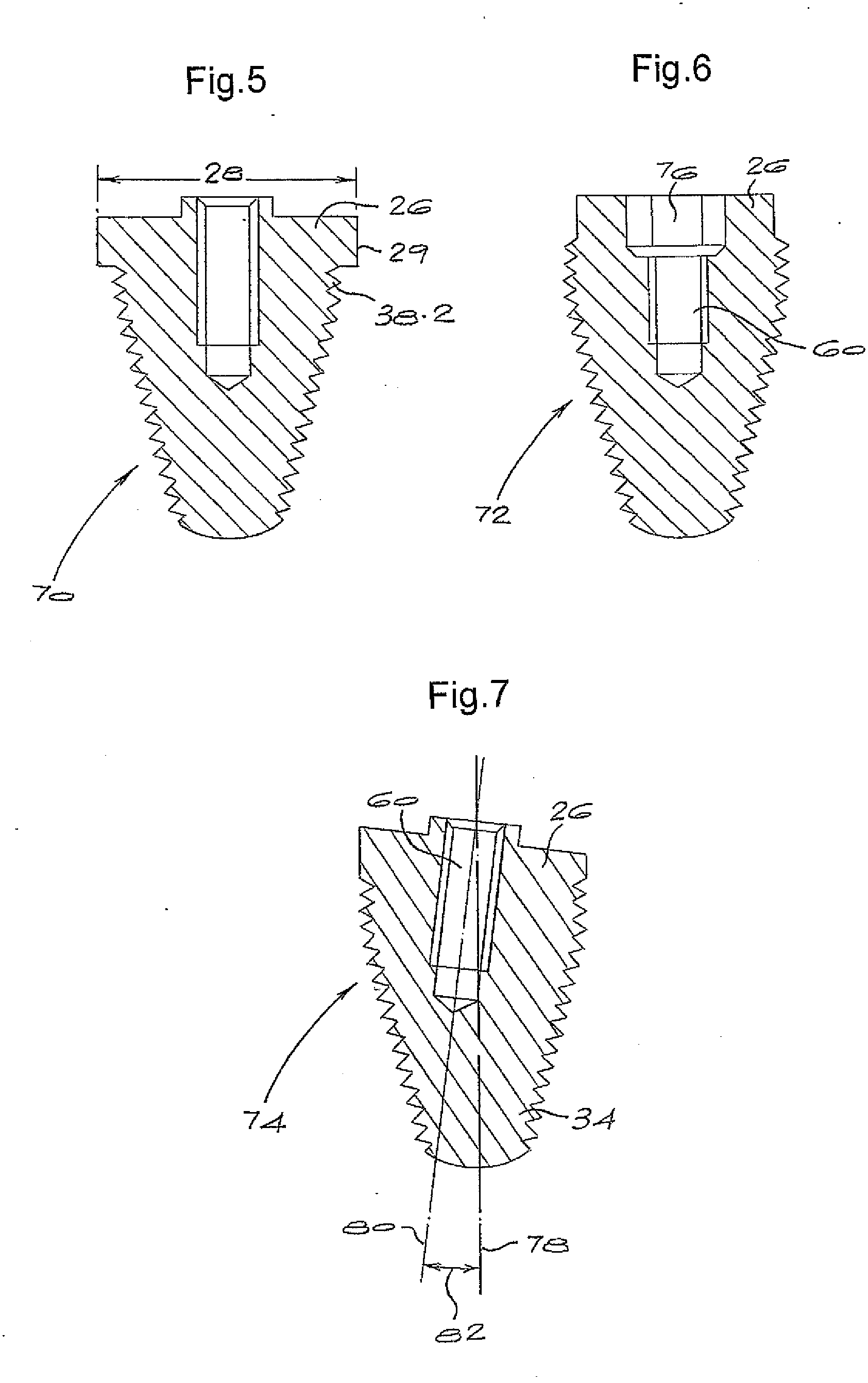Molar Implant and Method
- Summary
- Abstract
- Description
- Claims
- Application Information
AI Technical Summary
Benefits of technology
Problems solved by technology
Method used
Image
Examples
Embodiment Construction
[0023]In FIGS. 1 and 2 a maxillary bone is indicated by the numeral 10. In FIG. 1, the numeral 12 indicates a molar tooth having three roots 14. Extraction of the tooth from the bone 10 leaves three corresponding root sockets 16, as shown in FIG. 2, with surrounding bone structure 18 having a central region 20 between the respective sockets.
[0024]As indicated previously conventional practice might be to anchor a molar implant in a selected one of the sockets 16. This can result in non-central placement of the implant, leading possibly to biomechanical and physiological problems in the final implant assembly. Also, in order to achieve primary stability in the anchorage of the implant to the bone, it is required that the implant have a threaded shank which is relatively slender to enable it to be screwed into the selected socket.
[0025]The present invention proposes a different implantation technique in which a hole indicated by the line 22 is drilled, reamed or otherwise formed centra...
PUM
 Login to View More
Login to View More Abstract
Description
Claims
Application Information
 Login to View More
Login to View More - R&D
- Intellectual Property
- Life Sciences
- Materials
- Tech Scout
- Unparalleled Data Quality
- Higher Quality Content
- 60% Fewer Hallucinations
Browse by: Latest US Patents, China's latest patents, Technical Efficacy Thesaurus, Application Domain, Technology Topic, Popular Technical Reports.
© 2025 PatSnap. All rights reserved.Legal|Privacy policy|Modern Slavery Act Transparency Statement|Sitemap|About US| Contact US: help@patsnap.com



